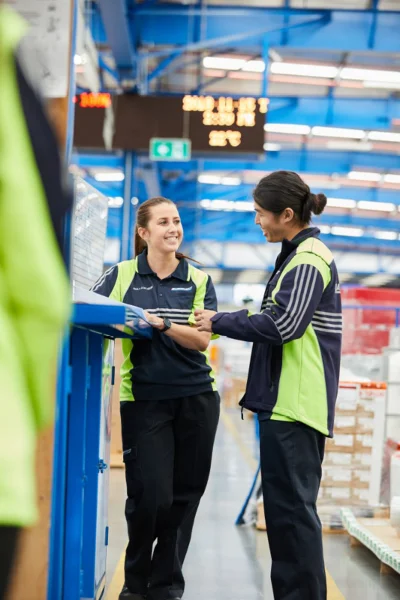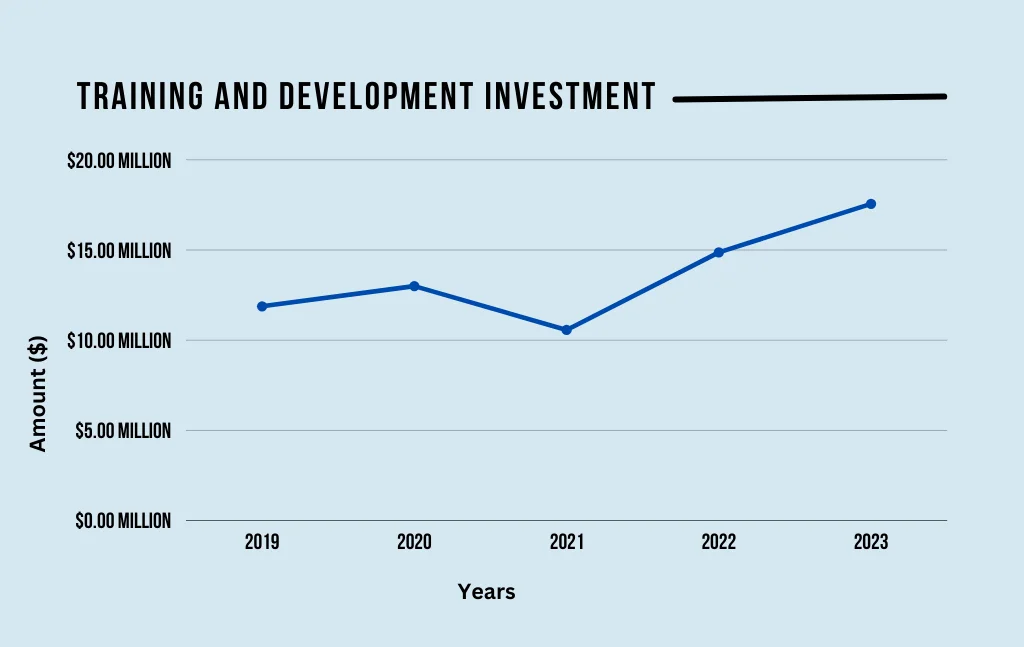- 21 June 2024
Continuous Growth: The Importance of Training, Development and Enagagement in the Supply Chain
It is estimated that the average Australian who works in supply chain and logistics spends approximately 42 hours per week at work. That is a 30.35% difference between the national average of 30.90 hours per week. This means people in the logistics industry spend a significant amount of time at work and it is up to their employers to ensure that their people are supported as much as possible to mitigate the risks of burnout, job dissatisfaction and workplace injuries.
When team members are inadequately trained or experience burnout, it negatively impacts the customer experience. This increases the risk of customers experiencing damaged, delayed, or lost freight, potentially leading to financial losses for the customer and dissatisfaction with the service provided.
Benefits of Training and Development
1. Improved customer satisfactionThe supply chain and logistics industry operates within a volatile environment characterised by rapid technological advancements and evolving customer demands. To thrive in such an industry, it is essential for organisations to prioritise equipping their team members with the necessary skills and resources to excel in their roles and drive overall success.
By providing ongoing training and opportunities for growth, organisations can empower their teams with the latest tools, techniques, and strategic insights needed to plan, execute, and monitor performance effectively.
This investment not only improves internal operations but also allows for a more positive experience for customers. When team members are well-trained and equipped to meet customer needs efficiently, it leads to greater satisfaction and loyalty, strengthening the organisation's reputation and competitive advantage in the market.
2. Increased team member engagement and retention
Investing in training and development promotes a culture where team members feel valued. When an organisation demonstrates to their team members that their growth and development within the organisation is important, through growth initiatives such as ongoing training, they are more likely to stay with the business for longer and are more engaged in achieving organisational goals.
3. Prevention of workplace injuries
A study carried out by Safe Work Australia revealed that the Transportation and Warehousing industry ranks among the top 5 industries with the highest number of workplace injury claims. Ensuring team members are informed about proper procedures and Occupational Health and safety guidelines is vital for minimising the risk of injuries. Equally important is providing education to team members on how to look after their mental health and physical well-being, especially in an industry where long working hours are typical.
4. Chain of responsibility
As of October 1st, 2018, amendments to the Heavy Vehicle National Law (HVNL) stipulate that every entity involved in the heavy vehicle supply chain is obligated to prioritise the safety of their transportation operations. This entails that any party identified in the Chain of Responsibility (COR), or exercising control or influence over the transportation process, including the sender and reciever, bears the responsibility of ensuring compliance with HVNL regulations. Non-compliance can lead to substantial fines, exceeding $377,000 for individuals and $3,000,000 for corporations. Therefore, it is crucial for all team members to be well-versed in COR requirements to uphold safety and compliance standards.


CASE STUDY: Mainfreight’s $17.56 million annual investment in training and development
Each new team member is provided with a week-long training induction program, ensuring they are equipped with the essential skills and knowledge to meet Mainfreight’s global high-quality standards. This training doesn’t just happen at the beginning of their Mainfreight journey but provided throughout their entire career.
At the core of the company, every team member is expected to value growth and learning. That’s why Mainfreight provides continuous training opportunities to all team members, empowering them to consistently grow and improve. These training opportunities come in the form of Occupational Health and Safety education, leadership skills training, operational training and much more.
In 2023, Mainfreight invested $17.56 million in training and development. This marks a 47.81% increase since 2019, demonstrating their commitment to training and development. Additional to this investment is Mainfreight’s second dedicated in-house training facility in Australia. The new Sydney training centre is equipped with a range of technology to simulate the experience of working within the branch. These technologies come in the form of forklift simulators and Pantech trucks that team members can loaded with mock freight.

The two dedicated training facilities ensure their team members are equipped with the skills to meet both their customer expectations and to contribute to the ongoing development of their business. The courses offered at these facilities include:
• Onboarding Inductions
• Licensing
• Procedural Training
• Operations Training
• Systems Training
• Occupational Health and Safety
• Leadership Skills
• Workplace Relationship Management
• Chain of Responsibility Training
• Essential Skills Training
• Dangerous Goods Training
• Driving Skill Courses
• Customer Care Training
• Sales Development Courses

The investment in training, development and wellbeing is vital to the success of any organisation. By providing opportunities for team members to acquire new knowledge and skills, Mainfreight demonstrates their commitment and investment in team member growth. This leads to a workforce that has a deep understanding of supply chain, inventory and freight transport management and possess essential skills to provide customers with real solutions and operational value.
Interest to find out more about Mainfreight's People strategy?
At Mainfreight our people are more than just a number, the are life long members. That is why we take continuous training and development seriously.
Find out more